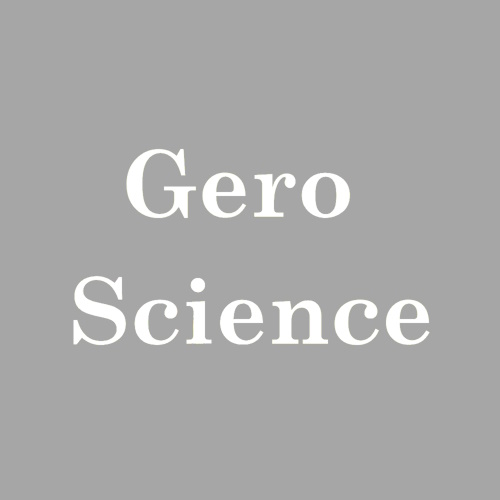Ageing - the universal, inevitable march of time that affects all living organisms. It's a complex, multifaceted process that has fascinated scientists for centuries. In the quest to unravel its mysteries, researchers have turned to a surprisingly simple yet powerful ally: the nematode Caenorhabditis elegans (C. elegans). A recent study, leveraging cutting-edge technology, has opened new vistas in ageing research, offering insights with potentially profound implications for human health.
C. elegans: A Model Organism for Ageing Research
C. elegans, a microscopic worm, has become a cornerstone of ageing research. Its appeal lies in its simplicity and genetic similarity to humans, with about 40% of its genes corresponding to human genes. This nematode goes through its entire lifespan in just 2-3 weeks, allowing scientists to quickly observe and study the effects of ageing and various interventions.
Traditionally, studying C. elegans involved manual observations, a time-consuming and often subjective process. The recent study revolutionised this approach by using automated monitoring systems, notably the WormGazer service provided by Magnitude Biosciences. This technology enabled precise, large-scale analysis of worm populations, tracking movement, behaviour, and other ageing markers with unprecedented accuracy.
A Closer Look
C. elegans was chosen for its unique suitability for ageing research. This nematode shares a surprising amount of genetic material with humans, despite its simplicity. Its short lifespan, typically around 2-3 weeks, allows researchers to observe the complete life cycle and ageing process in a condensed timeframe. Additionally, the transparent body of C. elegans provides an easy view of its biological processes, making it an ideal subject for study.
A pivotal aspect of the research was the implementation of the WormGazer service by Magnitude Biosciences. This state-of-the-art technology automated the process of monitoring and analyzing the nematodes. The WormGazer system could track and record various parameters such as movement patterns, speed, and frequency of certain behaviours, all of which are indicative of ageing in C. elegans.
Throughout the study, researchers collected a vast amount of data. The WormGazer allowed for continuous monitoring of the nematodes, generating detailed datasets that captured the nuances of their ageing process. This high-throughput approach meant that researchers could analyse large populations of worms over their entire lifespan, providing a comprehensive overview of the ageing process.
One of the most significant insights from the study pertained to the age-1 and daf-16 mutants of C. elegans. The research revealed two crucial aspects:
Age-1 Mutants: It was found that age-1 mutants of C. elegans tend to maintain their health for a longer period compared to their wild-type counterparts. This was a notable discovery, as it suggests that these mutants experience a form of extended health-span, a crucial factor in ageing research. However, an interesting observation was that these mutants exhibited less movement during early adulthood. This reduced movement in the initial stages of life may indicate unique metabolic or neurological characteristics in these mutants, offering a new angle for understanding how genetic factors influence the ageing process.
Daf-16 Mutants: The study also shed light on daf-16 mutants, revealing that these worms exhibit a peak in movement earlier in their lifespan than expected. This early peak could suggest accelerated developmental or ageing processes in daf-16 mutants, contrasting with the typical ageing pattern observed in standard C. elegans populations. Understanding why and how these mutants peak earlier in movement could provide valuable insights into the genetic and molecular pathways that govern ageing and lifespan.
Age-related Behavioural and Movement Changes
One of the key findings was the identification of specific age-related changes in the behaviour and movement of C. elegans. As the worms aged, there was a noticeable decline in their mobility. This decline was characterised by a decrease in both the speed and frequency of movement. The study also observed changes in the patterns of movement, such as the tendency to take shorter, less frequent turns.
Quantifying Ageing in C. elegans
The study successfully quantified aspects of ageing in C. elegans. By analysing the extensive data collected, researchers were able to correlate certain movement patterns with specific stages in the worms' life cycle. This quantification of ageing marks a significant advancement in the field, as it provides a concrete way to measure the progression of ageing in a model organism.
The sheer volume of data collected by the automated system allowed for rigorous statistical evaluations, lending significant weight to the findings. The correlation between certain movement patterns and age was statistically significant, bolstering the study's credibility.
The implications of this study are far-reaching. Understanding ageing in C. elegans can shed light on human ageing, potentially leading to new ways to slow the ageing process, improve healthspan, and treat age-related conditions. The parallels drawn from this research could be instrumental in developing interventions that enhance the quality of life in our later years.
Future Research Directions
The success of this study paves the way for further research. Future studies could leverage the automated monitoring system to explore the effects of different interventions on ageing in C. elegans. This could eventually lead to clinical trials and the development of treatments for ageing-related conditions in humans.
The role of technology, particularly the contribution of Magnitude Biosciences and the WormGazer service, cannot be overstated. This technological advancement has transformed how we study ageing, allowing for more precise, efficient, and comprehensive research. It exemplifies how innovation can propel scientific understanding and open new research frontiers.
As we delve deeper into the secrets of ageing, each discovery brings new questions and challenges. The journey of understanding ageing is an ongoing process, filled with complexities and opportunities. The study of C. elegans using advanced technologies like WormGazer is a significant step in this journey, offering a glimpse into the future of ageing research.
A Small Worm with Big Implications
These findings about age-1 and daf-16 mutants are both novel and crucial for the field of ageing research.
The humble C. elegans continues to be a key player in unraveling the mysteries of ageing. As we continue to explore and understand these tiny creatures, we inch closer to unlocking the secrets of longevity and healthy ageing in humans. This research exemplifies the incredible potential of scientific innovation and holds promise for a future where the challenges of ageing are better understood and more effectively managed.
The research was carried out by David Weinkove and other researchers from the Department of Biosciences, Durham University, and Magnitude Biosciences Limited. The findings were subsequently published in the GeroScience journal.








